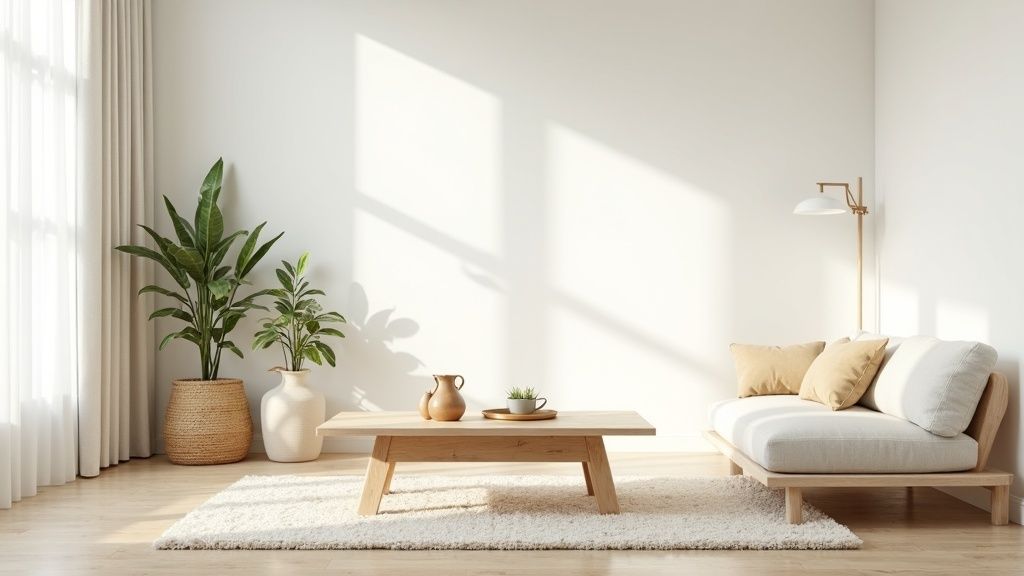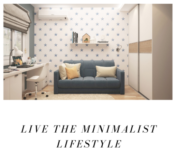Table of Contents
Minimalism In Daily Life: A Mindset That Can Keep You Grounded.
Minimalism can really change up day-to-day living, making things feel both refreshing and doable. Whether I’m looking to make my living space more peaceful or trying to simplify a busy schedule, focusing on what matters most helps lighten the load—physically and mentally. Getting started with minimalism isn’t complicated if I understand what it is, why people are drawn to it, and how it fits into everyday life.

Why Minimalism Makes Daily Life Smoother
Minimalism in daily life is all about stripping back to the basics so I can focus on what actually adds value to my day. It’s a pretty eye-catching antidote to feeling overloaded. Studies from places like the UCLA Center on Everyday Lives of Families show that clutter actually stresses people out. By cutting back, things feel more under control, and I notice an almost immediate difference in my mood and productivity.
Minimalism doesn’t mean living in an empty place or giving up everything fun. Instead, it’s about making intentional choices about what I keep in my space, how I spend my time, and even how I approach work and social commitments. Most people use minimalism to gain more time, enjoy a calmer home, and feel lighter overall. It’s kind of like finding breathing room in daily routines.
Minimalism has roots in Japanese Zen philosophy and the design movements of the 20th century, but lately it’s gone mainstream. It’s now common to see influencers, YouTubers, and regular folks sharing how owning less and doing less brings more peace and focus to life. Minimalism is also more than just a design trend—it’s a mindset that helps me stay grounded in what’s truly important.
How to Start Living a Minimalist Lifestyle
Jumping into minimalism can sound intimidating, but honestly, it’s about small, repeatable steps. I started by picking one area of my life to simplify and built out from there. Here are a few beginnerfriendly ideas that made a big difference right away:
- Declutter Intentionally: Focus on one room or a single drawer. Only keep what I use, need, or love.
- Create Daily Habits: Spending five minutes tidying each day is easier than an hour-long weekend cleanup.
- Prioritize Essentials: Look at my schedule, tasks, and stuff, and be honest about what I actually use or want.
Some minimalist phrases and concepts that help me:
- Capsule Wardrobe: A mixable set of clothes that makes picking outfits a no-brainer.
- One in, One Out: For every new thing I bring home, I let go of one. This keeps clutter from sneaking up on me.
- Mindful Consumption: Thinking carefully before buying or bringing in something new.
Simple Steps to Build Minimalism Into Your Routine
Making my days less chaotic started with a few practical steps I could stick to. Here’s a plan anyone can follow:
- Start Small: Work on one spot at a time—a shelf, a desktop, or my phone screen.
- Sort and Decide: Handle things once. Decide quickly whether to keep or let go.
- Say No More Often: Get comfy with declining invitations or commitments that feel like too much.
- Clear the Visuals: Clean off surfaces, keep only a couple of special items out, and store the rest away.
- Build a Routine: A few habits—like nightly tidying or a weekly reset—make a huge difference over time.
Doing these things creates more space to enjoy what I love, and my mornings feel much less rushed.
Challenges That Come Up When Switching to Minimalism
Minimalism comes with its own struggles, especially right when starting out. Here’s what I’ve bumped into, and how I’ve handled things:
- Letting Go of Sentimental Stuff: Letting go of old cards or souvenirs isn’t easy. I use one small keepsake box to hold special items, which keeps memories close without letting stuff pile up.
- Decision Fatigue: Sorting through things can be exhausting. Breaking tasks into smaller chunks and giving myself breaks helps a lot.
- Family or Roommate Buy-In: Not everyone in a shared space will be on board. I focus on my own things first, setting an example rather than pressuring anyone.
- Fear of Missing Out: Sometimes I worry about needing something after it’s gone. To solve this, I’ll box it up and hide it out of the way. If I don’t reach for it after a few months, it’s easier to let go.
Dealing with Sentimental Attachments
One of the trickiest parts is letting go of items that have strong memories. I often snap a photo of bigger pieces, jot down a story, or remind myself that letting go of “the thing” doesn’t mean losing the memory. Over time, this mindset gets stronger and makes the process easier.
Managing Daily Decisions
Getting rid of clutter is really a lot of small decisions. I like to begin with simple things—like duplicates, broken items, or junk mail—before moving on to more sentimental pieces. This way, the process doesn’t feel overwhelming and is less draining.
Balancing Minimalism with Everyday Life
Especially in shared homes or with kids, it’s not always possible to go all-in. I stick with the parts I can control—my side of the room, my stuff, my routine—and respect others’ preferences and belongings. Communication and flexibility are key here.
Saving Time and Making Life Easier
Adopting minimalism means less time spent cleaning and organizing, leaving extra hours for hobbies, work, or just unwinding. Even my morning routine is faster now, since there are fewer distractions and less to keep track of. The benefits show up quickly and make sticking with minimalism worthwhile.
Bumps in the road are totally normal, but with patience and a little flexibility, it gets easier over time.
Advanced Minimalism and Practical Strategies
Once the basics are locked in, it’s refreshing to set minimalism on autopilot or push it further. Here are a few ideas that help me keep momentum and dig deeper:
Try a “NoBuy Month”: One month using only what you have, no extra shopping. It helps figure out what you really use and need.
Go Digital: Scan important papers, file them on a computer, and recycle the rest. Regular digital cleanups—like handling my inbox and limiting social media—make my virtual life lighter too.
Focus on Multiuse Items: Owning fewer high-quality things that do more than one job can mean less clutter and more savings.
Mindful Scheduling: Each week I look at my calendar and cut out commitments that aren’t truly necessary. It keeps me from feeling overloaded and helps protect my time.
Playing around with these minimalism upgrades keeps the lifestyle running smoothly in the background. Websites like Becoming Minimalist and The Minimalists are loaded with inspiration and new tricks for sticking with this less-is-more approach.
How Minimalism Helps With Real-Life Problems
Minimalism in daily life isn’t just for the ultra-tidy or people with tiny houses. In everyday life, it helps with all sorts of issues:
- Organizing and Cleaning: Less stuff means faster tidying. Even with pets or kids, routines and fewer extras keep things under control.
- Managing Money: With fewer impulse buys, savings start to grow. When shopping is intentional, my budget also feels less strained.
- Mental Health Boost: A clean and clear space helps me sleep better and feel less stressed. Studies from Princeton University found that clutter can affect wellbeing, so keeping it simple truly makes a difference.
Here’s a look at some spots where minimalism brings quick benefits:
- Kitchen: Open counters and just the right number of utensils make cooking quicker and more enjoyable.
- Wardrobe: Choosing from a few favorite pieces—the classic capsule wardrobe—saves time each morning.
- Workspace: A clean desk can give creativity and focus a boost, especially when working from home.
Frequently Asked Questions About Minimalism
Questions always pop up for newcomers. Here are a few of the most common ones I hear:
Question: Do I need to get rid of everything to be a minimalist?
Answer: Not at all. Minimalism looks different for everyone. It’s about having what fits your life and makes you happy, not sticking to a strict number of things.
Question: How do I handle gifts or items from loved ones that I don’t really use?
Answer: Keeping some sentimental things is fine. It helps to focus on gratitude, not guilt. Often I’ll thank the person, appreciate the gift, and then decide if it belongs in my home long-term.
Question: What’s the best place to start with minimalism?
Answer: Go for the area that feels most overwhelming, like a messy closet or chaotic desk. Making progress in one spot often gives the motivation to keep going.
Minimalism in Daily Life Makes a Difference
Minimalism shapes routines that free up both time and headspace. Whether I’m clearing off counters, trimming down my calendar, or just keeping life less cluttered, I notice a payoff right away. My experience matches what many fellow minimalists report: life feels simpler, daily stress drops, and focus comes easier. Trying out small changes, keeping what works, and letting go of perfect makes minimalism a practical and worthwhile way to step up daily living.
